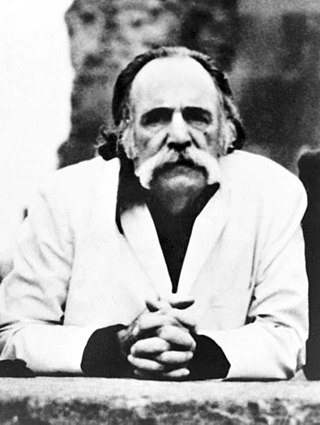
William Saroyan was an Armenian-American novelist, playwright, and short story writer. He was awarded the Pulitzer Prize for Drama in 1940, and in 1943 won the Academy Award for Best Story for the film The Human Comedy. When the studio rejected his original 240-page treatment, he turned it into a novel, The Human Comedy.

Hanford is the most populous city and the county seat of Kings County, California, located in the San Joaquin Valley region of the greater Central Valley. The population was 53,967 at the 2010 census.

Kettleman City is a census-designated place (CDP) in Kings County, California, United States. Kettleman City is located 28 miles (45 km) southwest of Hanford, 54 miles (88 km) south of Fresno, at an elevation of 253 feet (77 m), and sits only about 1/2 mile north of the 36th parallel north latitude. It is part of the Hanford-Corcoran Metropolitan Statistical Area. The population was 1,242 at the 2020 census, down from 1,439 at the 2010 census. When travelling between Los Angeles and either San Francisco or Sacramento via Interstate 5, Kettleman City is near the halfway point, and is thus a major stopping point for food and lodging.

Lemoore is a city in Kings County, California, United States. Lemoore is located 7.5 miles (12 km) west-southwest of Hanford, at an elevation of 230 feet (70 m). It is part of the Hanford-Corcoran Metropolitan Statistical Area. The population was 24,531 at the 2010 Census. The California Department of Finance estimated that Lemoore's population was 26,725 on July 1, 2019.

Ross S. Bagdasarian, known professionally by his stage name David "Dave" Seville, was an American singer, songwriter, record producer, and actor of Armenian descent best known for creating the cartoon band Alvin and the Chipmunks. Initially a stage and film actor, he rose to prominence in 1958 with the songs "Witch Doctor" and "The Chipmunk Song ", which both became Billboard number-one singles. He produced and directed The Alvin Show, which aired on CBS in 1961–62.
Eurovision is a pan-European television telecommunications network owned and operated by the European Broadcasting Union (EBU). It was founded in 1954 in Geneva, Switzerland, and its first official transmission took place on 6 June 1954. However, a year before the official launch, on 2 June 1953 the coronation of Elizabeth II was one of the first events to be broadcast across Europe.

JoJo's Circus is a stop-motion animated television series created by Jim Jinkins, David Campbell, Lisa Jinkins, and Eric Weiner and produced by the Canada-based Cuppa Coffee Studios and Cartoon Pizza. The series was written by Douglas Wood, who previously worked for Tiny Toon Adventures and Animaniacs as a creative executive. The series' songs were composed by Jeffrey Zahn and Jim Latham, with lyrics done by Judy Rothman. The theme song was performed by BECKY.
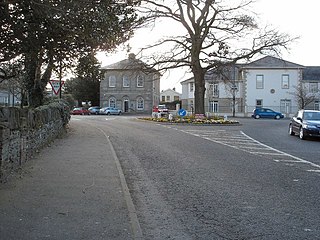
Eglinton is a village in County Londonderry, Northern Ireland. It lies 5.5 miles (8.9 km) east-north-east of Derry, to which it serves as a sleeper village, and 9.5 miles (15.3 km) west-south-west of Limavady. It resides within Derry and Strabane district. The City of Derry Airport, also known as Eglinton Aerodrome and formerly as Londonderry Eglinton Airport, lies a short distance from the village.

"The Town Mouse and the Country Mouse" is one of Aesop's Fables. It is number 352 in the Perry Index and type 112 in Aarne–Thompson's folk tale index. Like several other elements in Aesop's fables, "town mouse and country mouse" has become an English idiom.
"The Summer of the Beautiful White Horse" is a short story by William Saroyan, published within the collection My Name is Aram. It tells the story of two boys, Aram and Mourad, who belong to a very poor fictional tribe called the Garoghlanian tribe.
David of Sassoun is the main hero of Armenia's national epic Daredevils of Sassoun, who drove Arab Egyptian invaders out of Armenia.
"At the Bay" is a 1922 short story by Katherine Mansfield. It was first published in the London Mercury in January 1922 in twelve sections, and later reprinted in The Garden Party and Other Stories (1922) with a short descriptive coda which is now the thirteenth section. The story represents Mansfield’s best mature work, a luminous example of her literary impressionism. While writing it at the Chalet des Sapins in Montana, Switzerland, she was coming to terms with her relationship with her husband John Middleton Murry and with her own origins and identity.
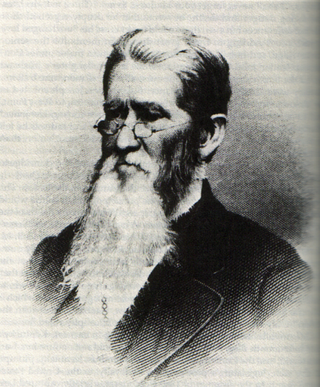
Robert Jefferson Breckinridge was a politician and Presbyterian minister. He was a member of the Breckinridge family of Kentucky, the son of Senator John Breckinridge.
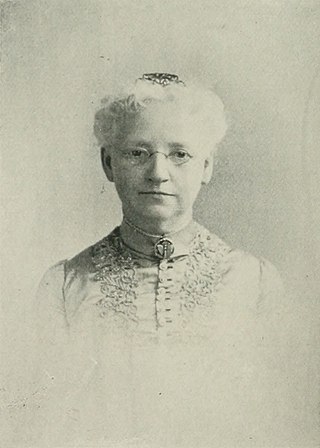
Martha Finley was an American teacher and author of numerous works for children, the best known being the 28-volume Elsie Dinsmore series which was published over a span of 38 years. Her books tend to be sentimental, with a strong emphasis on religious belief. The daughter of Presbyterian minister Dr. James Brown Finley and his wife and cousin Maria Theresa Brown Finley, she was born on April 26, 1828, in Chillicothe, Ohio. She died in 1909 in Elkton, Maryland.
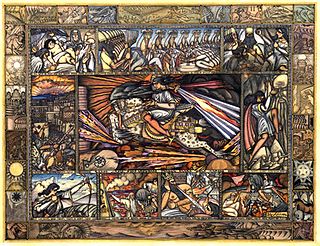
Daredevils of Sassoun is an Armenian heroic epic poem in four cycles (parts), with its main hero and story better known as David of Sassoun, which is the story of one of the four parts.

James Garland Quintel is an American animator, storyboard artist, director, writer, producer, and voice actor. He is best known as the creator of the Cartoon Network series Regular Show (2010–2017), in which he voiced Mordecai and High Five Ghost, and the HBO Max series Close Enough (2020–2022), in which he voiced Josh.

Dolphin Tale is a 2011 American 3D family drama film directed by Charles Martin Smith and written by Karen Janszen and Noam Dromi. It stars Harry Connick Jr., Ashley Judd, Nathan Gamble, Kris Kristofferson, Cozi Zuehlsdorff in her film debut, and Morgan Freeman. The book and film are inspired by the true story of Winter, a bottlenose dolphin that was rescued in December 2005 off the Florida coast and taken in by the Clearwater Marine Aquarium. In the film, Winter loses her tail after becoming entangled with a rope attached to a crab trap, and must be fitted with a prosthetic one in order to swim naturally again.
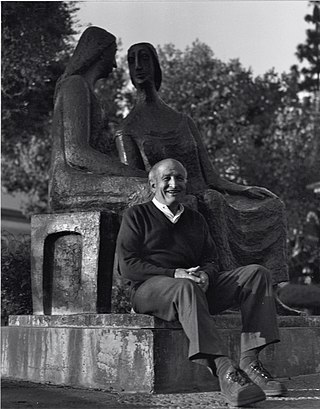
Clement Renzi was an American sculptor whose figurative bronze and terra cotta works depict people, human relationships, animals, and birds. His work has been popular with collectors in California's Central Valley and is placed in more than 60 public venues, primarily in that region.

The Little Mermaid is a 2018 American live-action fantasy-adventure film inspired by the 1837 Hans Christian Andersen story of the same name. It is directed and written by Blake Harris, co-directed by Chris Bouchard, and produced by Armando Gutierrez and Robert Molloy.
Gor Kirakosian, is an Armenian-American director, producer, and screenwriter known for his comedy films, such as Big Story in Small City, Lost and Found in Armenia, Ticket to Vegas, The Knight's Move, and Honest Thieves.















